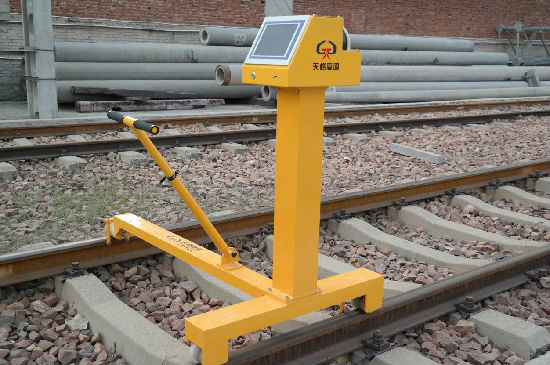/我院徐成教授主持研发“高铁接触网智能检测机器人”
Date of Publication: 12.27.16./ 发布于:2016-12-27
Editor & Translator: Rosie YU Rizhen/ 编译:余日臻


A team of HNU CSEE researchers partnered with Beijing Tiangegaotong Technology Co. carried out research related to breakthroughs in intelligent detection robot for high speed railway network.
The research was carried out at HNU’s Hunan University - Beijing Tiangegaotong Technology Co. High Speed Railway Intelligent Detection Robot Joint Laboratory, currently under procurement at Chengdu Railway Bureau and slated for application in 2017.
The collaboration was announced this week by our college, a network of companies that are becoming global leaders in railway system technology and its practical applications.
HNU CSEE Professor XU Cheng examine the effectiveness of new diagnostic techniques for railway system. HNU has been instrumental in leading the precise distance and tension imaging technology’s development. This research lasts for more than five years.
Their results will be analyzed using an advanced patent technique product known as TGGT-DT-3. TGGT-DT-3's software measures the frequency and origin of particular power waves, which appear to be specifically affected after railway damage or erosion.
TGGT-DT-3 was developed at the Hunan University (HNU) and is currently under exclusive license to Tiangegaotong, a company in Beijing.
The methods and associated software platform will be included with Tiangegaotong's newly developed system, which maps high speed train activity by recording magnetic fields produced by electrical currents occurring electronically within radars of the train.
The system will create newly accessible detection technology solutions for the growing challenges in transportation and communication.
“It is our hope that this globally innovative science will rapidly lead to better care for the countless people who are affected by inefficient transportation and related railway accidents, whether it be from nature related disasters, human behavioral railway accidents or other types of damage,” says Prof. Xu.
Professor Xu Cheng developed the high-speed railway catenary inspection robot with detection of geometric parameters through the automatic contact while it walks on the track. The device and method could be widely used in the railway industry. The robot has high measurement precision feature and is fast, efficient, intuitive, intelligent, reliable, and portable. It also had greatly improved the high-speed railway catenary geometry, the precision and the efficiency of the network. Moreover, the new device is aimed to promote the safety and efficiency of China’s high speed railway operation, so it plays a positive role.
The lab, which is being established by HNU and the TGGT, in partnership with Shenzhen KeyBridge Communication, has translated high speed railway technology advances, transportation innovations in detection and advance monitoring into standard practical robotic science.
HNU CSEE has committed to build China’s high speed railway intelligent detection technology innovation base for both industrial and research use. It is one of several technology partners working to create rapid impacts in transportation improvement and outcomes.












